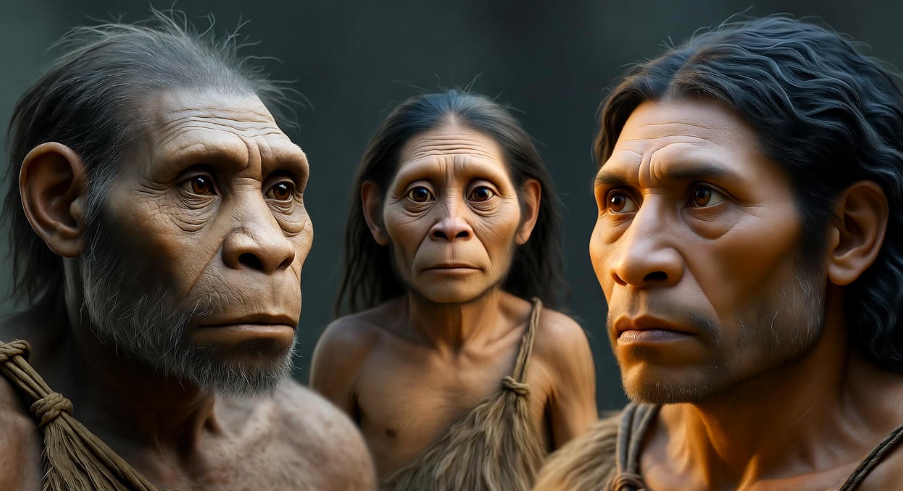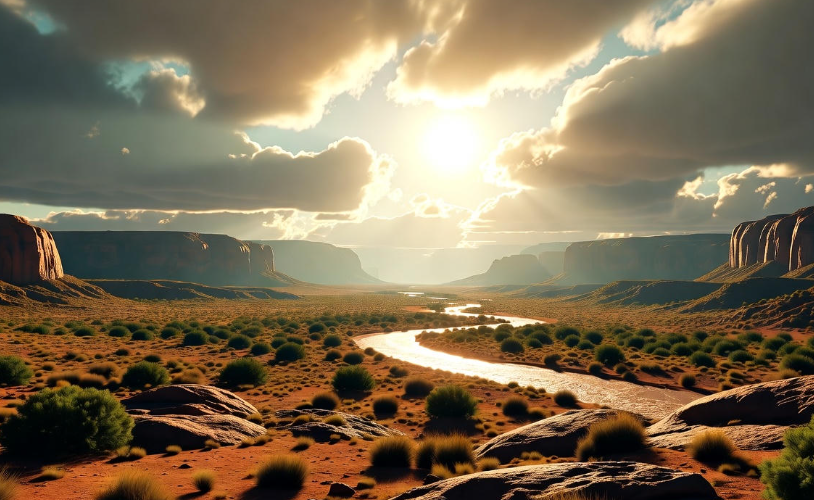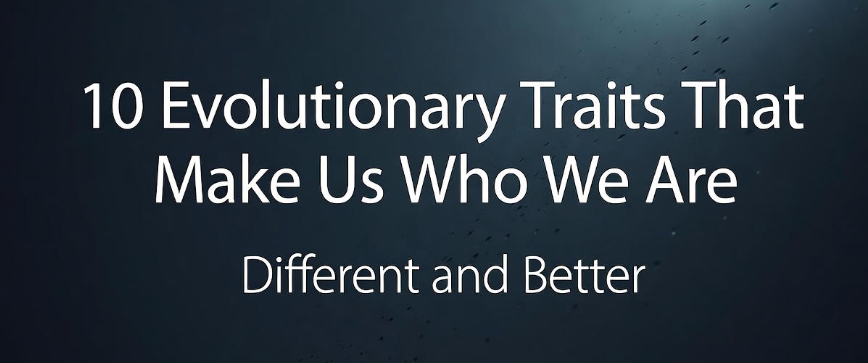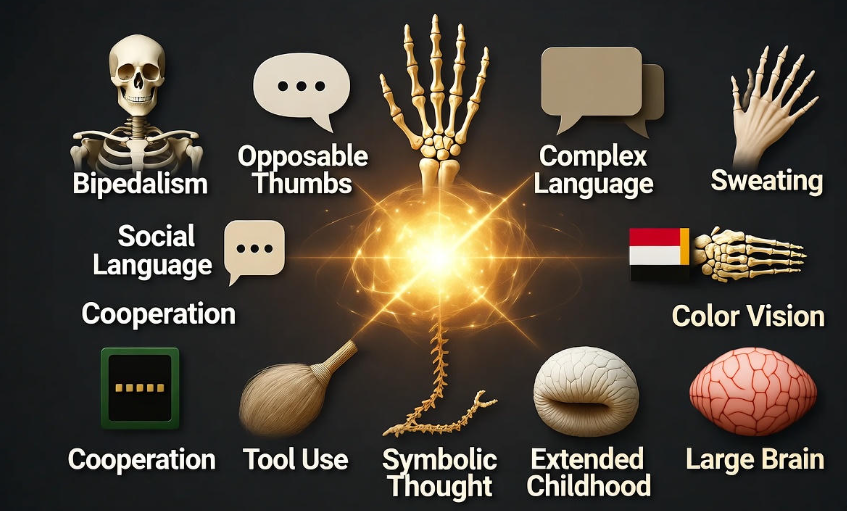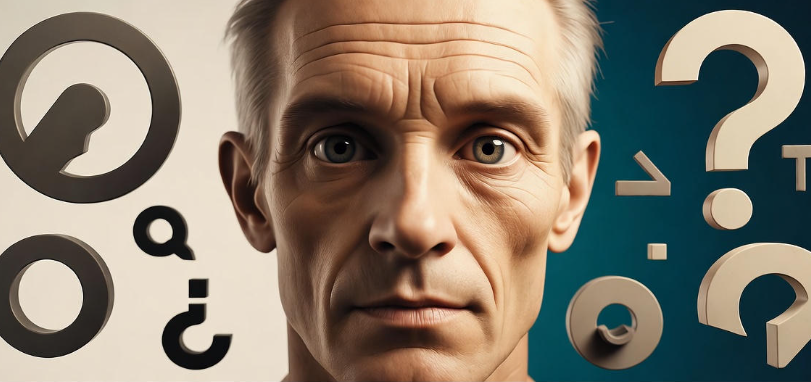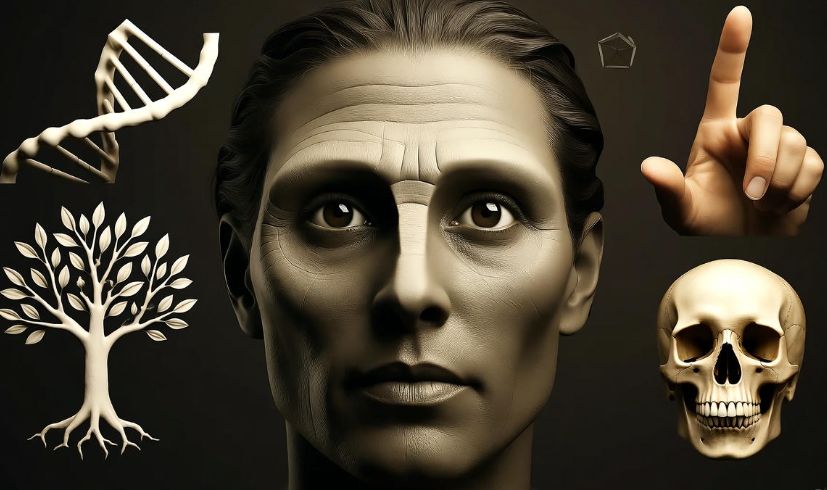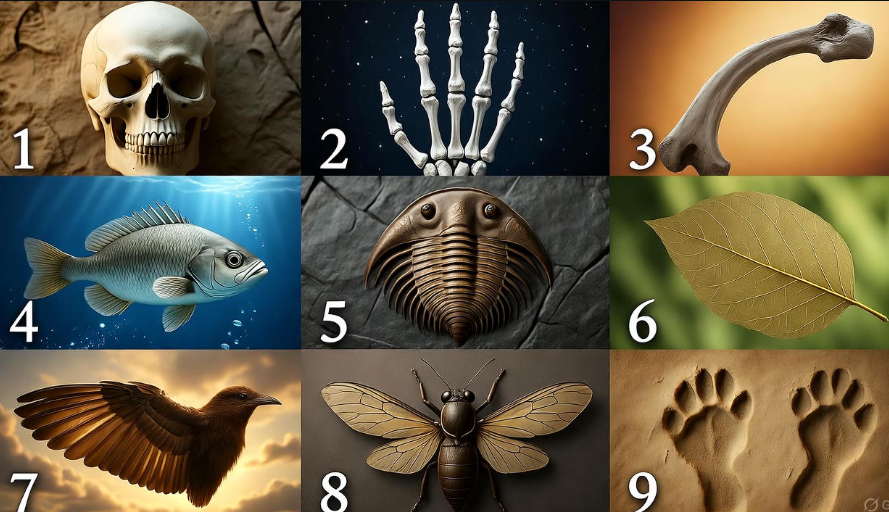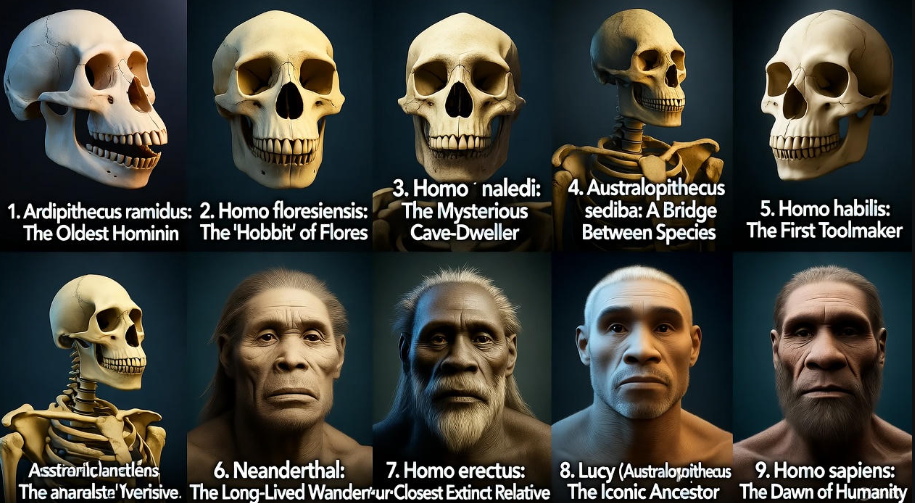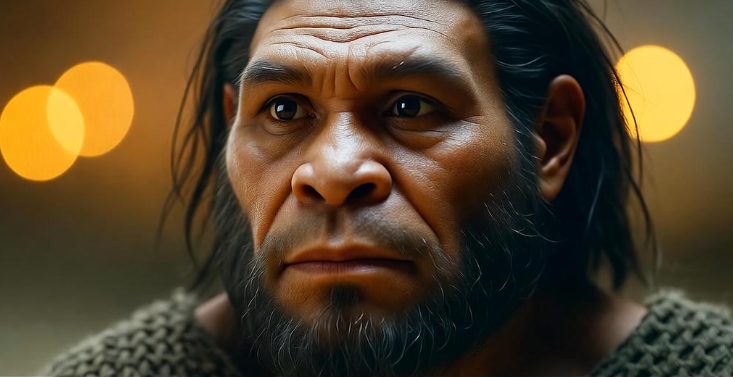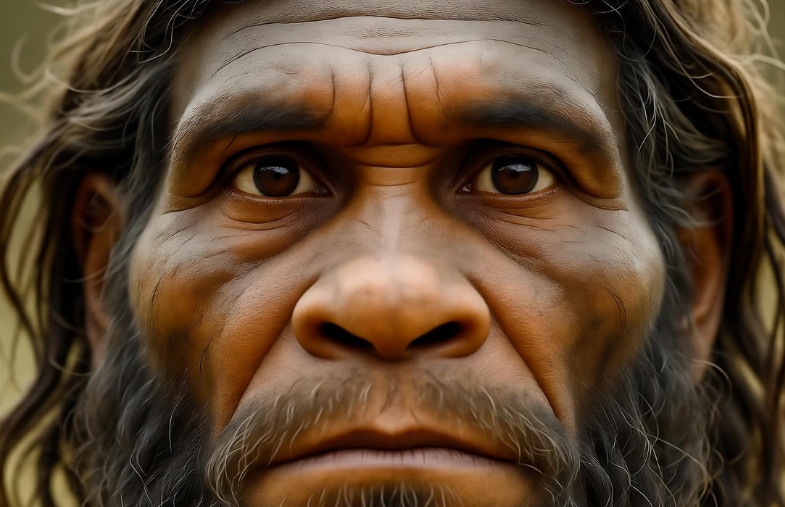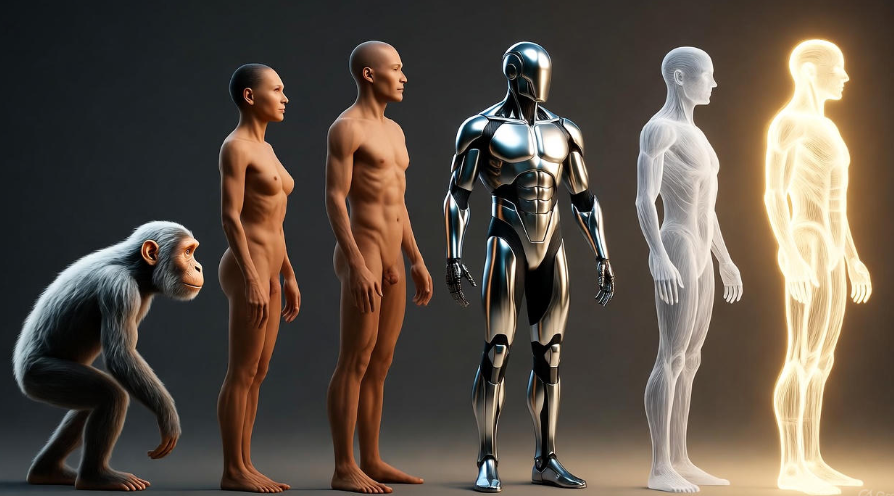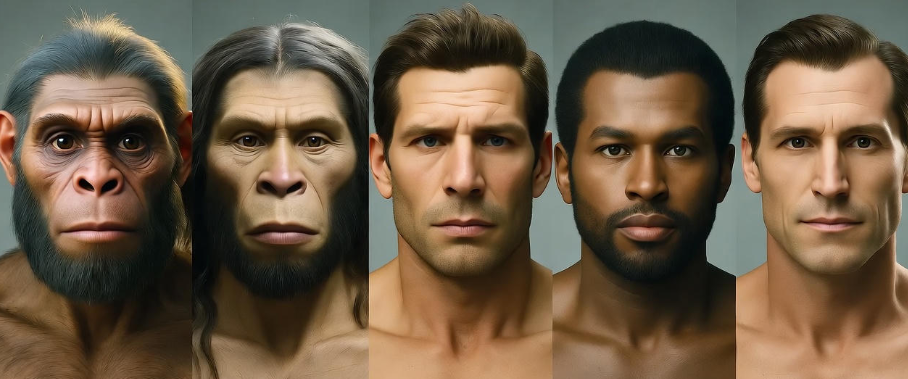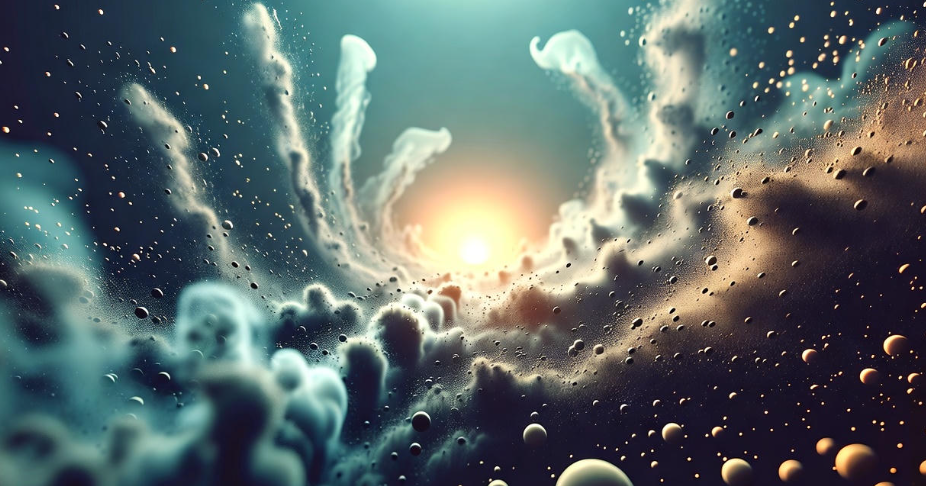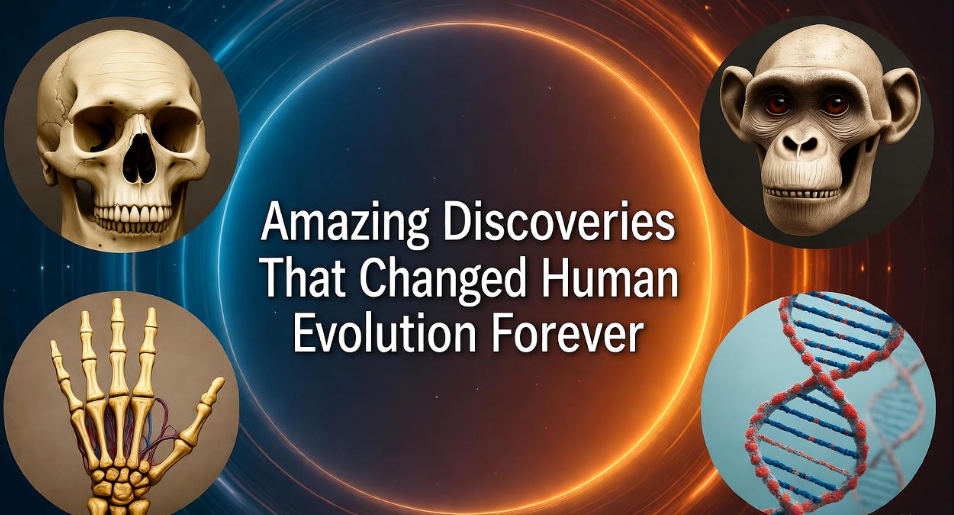It’s a question as old as humanity itself: Where did we really come from? For centuries, scientists, philosophers, and spiritual thinkers have tried to solve this mystery. From the theories of evolution to the stories written in ancient scriptures, our origins have always fascinated and confused us. But as modern science continues to uncover new clues, the puzzle of human beginnings is finally starting to make sense. 🧩
Let’s explore how the mystery of human origins is being slowly—but surely—explained in a way that feels both logical and a little magical.
The Spark That Started It All
Long before humans existed, the Earth was just a ball of hot gases and molten rock. Over billions of years, the planet cooled down, oceans formed, and somehow, something incredible happened — life began.
No one knows exactly how, but most scientists believe that simple chemical reactions in the ocean gave birth to the first living organisms about 3.8 billion years ago. These were tiny microbes — invisible to the naked eye, but powerful enough to start the chain of life. 🌊
One theory says that lightning, volcanoes, and minerals in early Earth’s oceans created the perfect soup for organic molecules to form. Another theory, known as panspermia, suggests life might have come from space — perhaps carried on a meteorite that crashed into Earth. Both ideas are mind-blowing, but one thing is certain: from that single spark, everything we see today, including humans, eventually evolved.
From Microbes to Mankind
If you zoom out and look at life’s timeline, humans are very new to the story. Imagine Earth’s history as a 24-hour clock — life appeared around 4 a.m., dinosaurs came at 10 p.m., and humans? We arrived just seconds before midnight!
So, how did we get here? Evolution is the main explanation. It’s not just a theory — it’s the process that shaped every living thing. Over millions of years, early life forms adapted to survive, changed forms, and developed new features. Tiny cells became fish, fish became amphibians, and eventually, land animals evolved into mammals.
Some of these mammals, living in Africa about 6–7 million years ago, started walking upright. They were our earliest ancestors — small, clever, and curious. Over time, these ancient beings evolved into what we now call hominins, the group that includes us, Homo sapiens.
The Many Versions of “Us”
Most people think humans are the only kind of humans that ever existed. But that’s not true! 🌍
There were many versions of “us” before modern humans appeared. Here are a few of them:
| Early Human Species | Time Period (Approx.) | Key Features |
|---|---|---|
| Australopithecus | 4–2 million years ago | Walked upright but had a small brain |
| Homo habilis | 2.4–1.4 million years ago | Used simple stone tools |
| Homo erectus | 1.9 million–110,000 years ago | Controlled fire, traveled long distances |
| Neanderthals | 400,000–40,000 years ago | Strong, intelligent, lived in cold areas |
| Homo sapiens | 300,000 years ago–present | Advanced language, culture, and creativity |
Each version added something new — intelligence, communication, tools, and imagination. It’s like nature was slowly testing ideas until it created the perfect mix: us.
The Great Leap Forward
About 70,000 years ago, something amazing happened. Humans suddenly started creating art, making complex tools, and forming large social groups. Archaeologists call this moment the cognitive revolution.
No one is completely sure what triggered it, but scientists think it was a mix of genetics and social behavior. Maybe our brains developed new connections. Or maybe we just started working together in smarter ways.
What’s even more interesting is that humans began to think beyond survival — they imagined, believed, and created. 🧠 Cave paintings, symbols, and early languages began to appear. It was the moment we truly became human.
When Humans Walked the Earth Together
Imagine a time when you could meet a Neanderthal face-to-face. Around 50,000 years ago, there were several types of humans living at once — Neanderthals in Europe, Denisovans in Asia, and modern Homo sapiens spreading from Africa.
Surprisingly, we didn’t just compete; we connected. DNA studies show that modern humans interbred with both Neanderthals and Denisovans. This means that if you have European or Asian ancestry, a small part of your DNA might actually belong to these ancient cousins. 🧬
Eventually, Homo sapiens became the only surviving species. Why? Probably because of our ability to adapt, communicate, and cooperate in larger groups. We built shelters, made clothing, shared stories, and passed down knowledge. These small actions shaped the future of humanity.
The African Beginning
Most scientists agree that modern humans began in Africa. Fossils and genetic studies show that all living humans share a common ancestor from Africa about 200,000 to 300,000 years ago.
This idea is known as the “Out of Africa” theory. It suggests that small groups of humans migrated out of Africa and spread across the world, replacing or mixing with other species they met along the way.
Africa, in a way, is the real “cradle of humanity.” 🌍 Every person on Earth — no matter their skin color, race, or language — can trace their roots back to that ancient continent.
The Secret Hidden in Our DNA
The biggest clues about human origins aren’t just found in fossils anymore — they’re hidden inside us.
Our DNA tells a story millions of years old. It carries the memories of migration, adaptation, and survival. Genetic research shows how humans spread, mixed, and evolved differently in various parts of the world.
For example:
-
People living near the equator developed darker skin to protect against strong sunlight.
-
Those in colder areas evolved lighter skin to absorb more Vitamin D.
-
Some populations developed lactose tolerance, allowing them to digest milk as adults.
All these small changes were nature’s way of helping humans fit into different environments — an ongoing story of adaptation and survival. 🌱
What Ancient Bones Still Tell Us
Fossils are like nature’s time capsules. Every discovery adds a new piece to our puzzle. One of the most famous fossils, Lucy, discovered in Ethiopia, belonged to an early species called Australopithecus afarensis. She lived about 3.2 million years ago and walked upright.
Then there’s the Turkana Boy, a nearly complete skeleton of Homo erectus found in Kenya, showing how advanced our ancestors had become. And in 2017, scientists found bones in Morocco that pushed back the age of modern humans to nearly 300,000 years.
Each discovery proves that human evolution wasn’t a straight line — it was more like a tree, with many branches, dead ends, and surprises.
Could There Be More to the Story?
Even with all these discoveries, many questions remain. Did life start on Earth or somewhere else? Were there unknown human species that disappeared without leaving a trace?
Some researchers even believe there may have been civilizations before recorded history, wiped out by natural disasters. While there’s no solid proof yet, new technologies like DNA mapping, deep-sea exploration, and AI-assisted archaeology may soon reveal more secrets. 🤖
The Role of Culture and Imagination
What truly makes humans different isn’t just our brains — it’s our ability to imagine. We build beliefs, create art, write stories, and dream of the future. No other species does that.
When humans started to believe in things they couldn’t see — gods, spirits, love, and purpose — it changed everything. It gave meaning to life and shaped entire civilizations. Our imagination became our superpower. 💭
This creative spark is what turned simple survival into a world filled with music, science, and beauty.

The Future of Our Evolution
Evolution never stops. Even today, humans are still changing. The digital age, climate change, and new technologies are all shaping our biology and behavior.
For example:
-
People are spending more time indoors, changing skin tone and vitamin levels.
-
Our brains are adapting to multitasking and fast information.
-
Gene editing and artificial intelligence may even guide future evolution.
The next stage of humanity might not just be natural — it could be designed. But one thing is certain: our origins will always remain our foundation, reminding us how far we’ve come. 🌌
Quick Summary Table
| Phase | Key Development | Time Period |
|---|---|---|
| Life Begins | First simple organisms | ~3.8 billion years ago |
| Early Humans Emerge | Australopithecus, Homo habilis | 4–2 million years ago |
| Fire & Tools | Homo erectus spreads globally | 1.9 million years ago |
| Neanderthals & Others | Multiple human species exist | 400k–40k years ago |
| Homo sapiens Rise | Modern humans evolve in Africa | 300k years ago |
| Migration & Civilization | Out of Africa, global spread | 100k years ago–present |
Some Interesting Facts 🧠
-
Humans share 98.8% of DNA with chimpanzees.
-
The first humans to wear clothes lived around 170,000 years ago.
-
Early humans used red ochre pigment for art and body paint.
-
The average brain size of early Homo sapiens was slightly larger than ours today.
-
Ancient humans migrated more than 50,000 kilometers across continents.
FAQs
Q1: Did all humans come from Africa?
Yes. Genetic and fossil evidence show that all modern humans originated in Africa before spreading to other continents.
Q2: What happened to Neanderthals?
They went extinct around 40,000 years ago, possibly due to climate change and competition with modern humans — though we still carry some of their DNA.
Q3: Are humans still evolving?
Absolutely! Evolution is ongoing, though the changes now are slower and influenced by technology and lifestyle.
Q4: Could life have started from space?
It’s possible. The panspermia theory suggests that life’s building blocks came from meteorites — but there’s no final proof yet.
Q5: What’s the oldest known human fossil?
The oldest known fossils of modern humans are from Morocco, dating back about 300,000 years.
Final Thoughts 🌍
The story of human origins isn’t just about bones and DNA — it’s about curiosity, courage, and the endless search for understanding. We are all part of a story that began billions of years ago, written by nature and carried forward by imagination.
Every breath we take connects us to that ancient spark of life — the same one that started it all. And maybe, just maybe, that’s the real magic behind our origin. ✨

